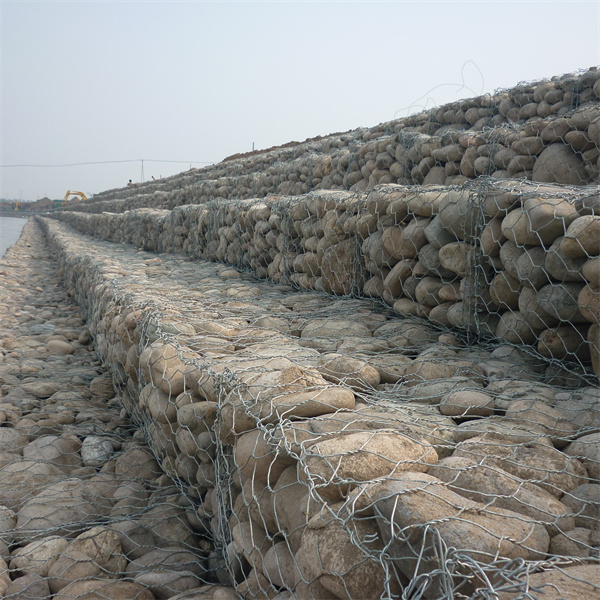Hul . 28, 2024 14:01 Back to list
Affordable Gabion Baskets Available from Local Factories for Your Landscaping Needs
Gabion for Sale A Sustainable Solution for Landscape and Structural Design
Gabions, originating from the Italian word gabbione, meaning big cage, have become a popular choice in outdoor landscaping and civil engineering. These structures consist of a wire mesh cage filled with rocks, stones, concrete, or other materials, serving various purposes, from erosion control to decorative landscaping. As industries evolve and the need for sustainable building materials grows, gabion factories have emerged to produce these versatile components for various applications.
One of the primary advantages of gabions is their exceptional strength and stability, making them ideal for retaining walls, riverbank stabilization, and flood control. The design of gabions allows for natural drainage, reducing hydrostatic pressure against walls, which often leads to structural failure in conventional retaining wall materials. By using gabions in construction projects, engineers and landscape architects can create robust structures that blend harmoniously with the environment.
The Role of Gabion Factories
Gabion manufacturing factories have proliferated to meet the rising demand for these efficient building solutions. These factories employ advanced technology and skilled labor to produce high-quality gabions that adhere to industry standards. Most gabions are made from galvanized steel wire or PVC-coated wire, ensuring durability and resistance to corrosion. Factories can customize gabion sizes and shapes to suit specific project requirements, maintaining flexibility in design and functionality.
The mass production of gabions in factories facilitates cost-effective solutions for large-scale projects. Clients can purchase gabions directly from these factories, often benefiting from lower prices due to economies of scale. Whether for commercial projects, public infrastructure, or private landscaping, sourcing gabions directly from factories simplifies the procurement process.
Applications of Gabions
Gabions have found their way into various applications, showcasing their versatility. Here are some common uses
1. Erosion Control Gabions are frequently employed in coastal and riverbank protection to prevent soil erosion. Their design allows for water flow while stabilizing the bank, making them an eco-friendly solution.
gabion for sale factories

2. Retaining Walls They provide excellent structural support for slopes and hillsides, helping to retain soil and prevent landslides. The permeability of gabion walls reduces water build-up, further enhancing stability.
3. Noise Barriers In urban settings, gabions can serve as sound barriers, reducing noise pollution from roads or highways. Their aesthetic versatility allows for the integration of greenery, offering both function and form.
4. Decorative Elements Gabions can also be used for aesthetic purposes in landscaping. Filled with colorful stones or plants, they create striking visual elements in gardens, parks, and outdoor spaces.
5. Flood Control Their robust construction makes gabions an effective flood control measure. By strategically placing gabion structures in flood-prone areas, communities can mitigate flood damage and protect infrastructure.
Environmental Benefits
The utilization of gabions aligns with sustainable construction practices. They often use locally sourced materials, reducing transportation emissions and supporting local economies. Furthermore, their permeability allows for natural vegetation growth, promoting biodiversity. Unlike traditional concrete solutions, gabions are designed to blend seamlessly into the landscape, minimizing visual impact.
Conclusion
In conclusion, gabions represent a sustainable and adaptable solution for various civil engineering and landscaping applications. With the support of specialized gabion factories, the production and availability of these innovative structures are more accessible than ever. Their combination of strength, environmental harmony, and aesthetic appeal makes gabions an increasingly popular choice for contractors, engineers, and landscape designers alike. As we continue to prioritize sustainable materials in construction, gabions are poised to play a crucial role in the future of building design and management.
-
The Role of Galvanized Gabion Mesh in Riverbank Protection
NewsJun.26,2025
-
The Role of Gabion Basket Raised Bed in Sustainable Gardening
NewsJun.26,2025
-
Quality Assurance of Wire Mesh Gabion Baskets
NewsJun.26,2025
-
Installation Guide for Welded Gabion Box
NewsJun.26,2025
-
How to Choose the Right Gabion Box
NewsJun.26,2025
-
Different Types of Gabion Wire Mesh
NewsJun.26,2025
-
Why PVC Coated Gabion Mattress Is the Best Solution for Long-Term Erosion Control
NewsMay.23,2025






